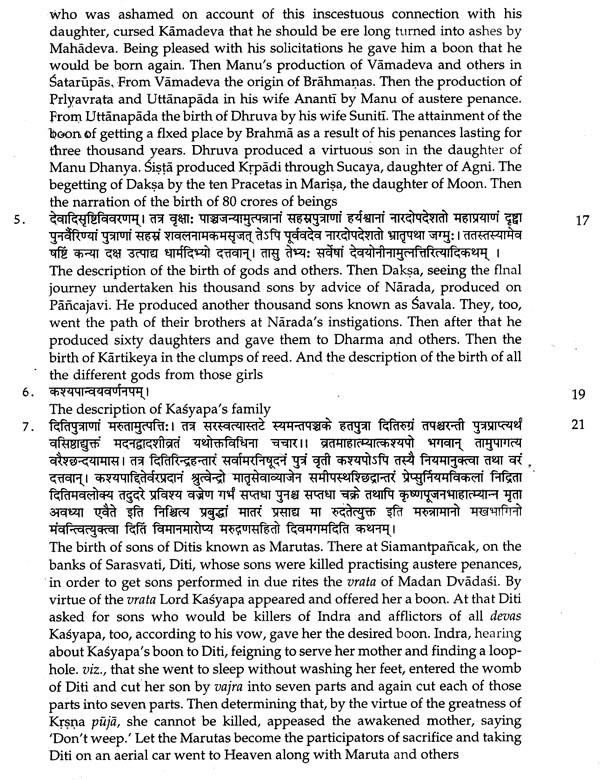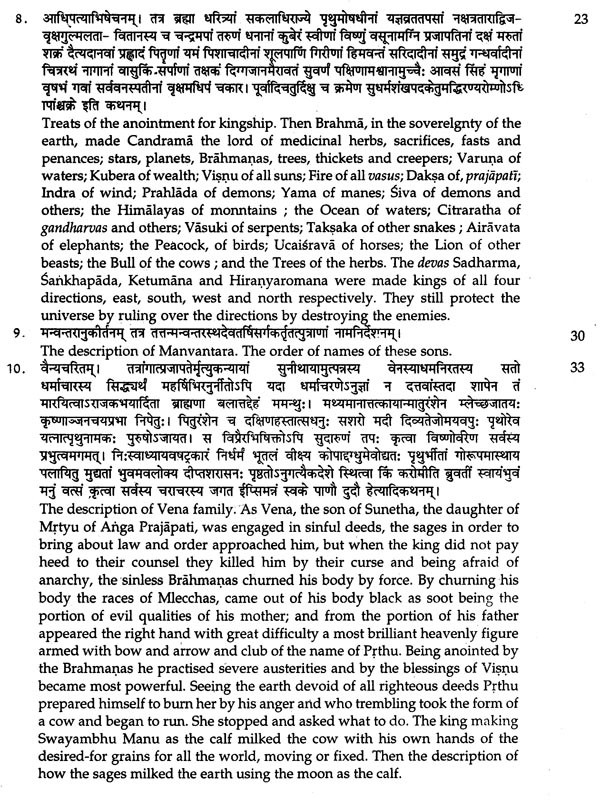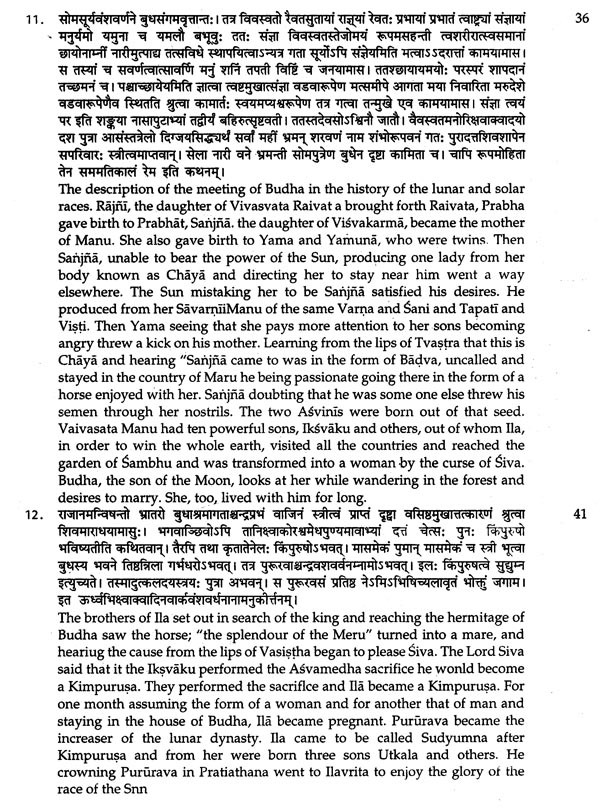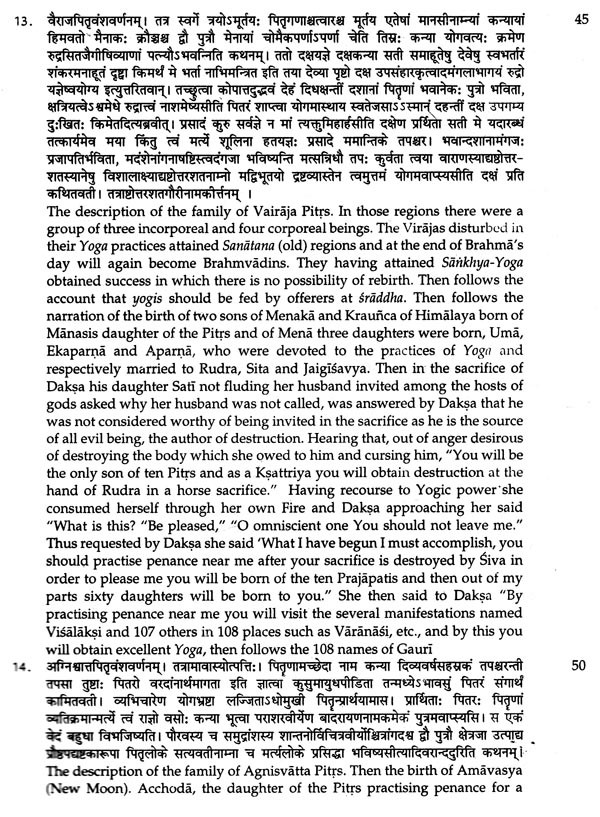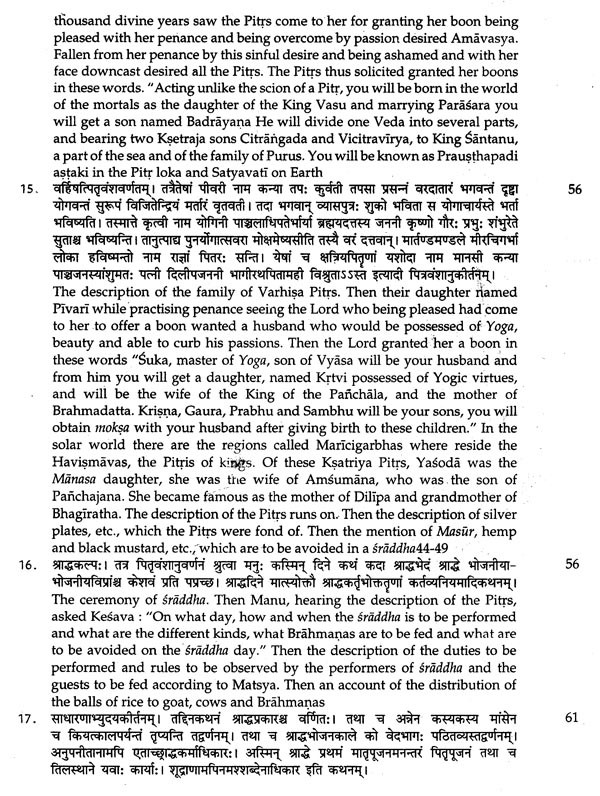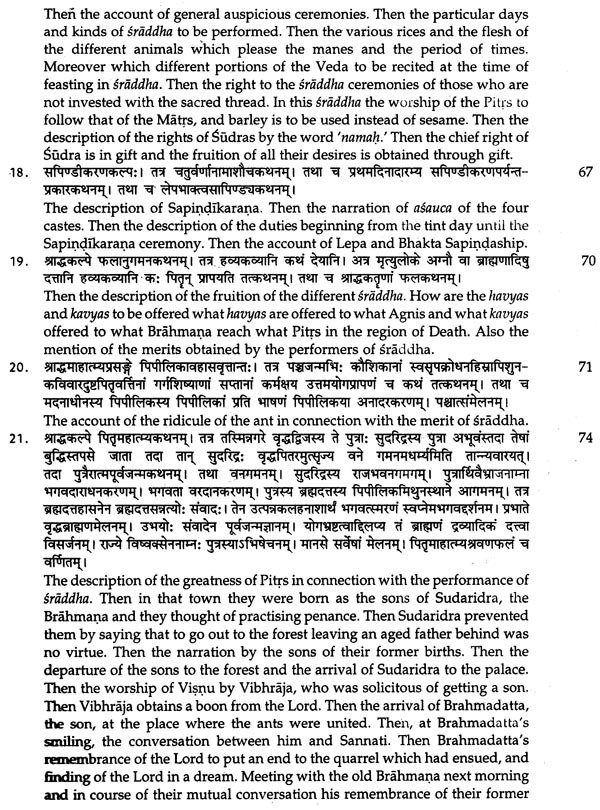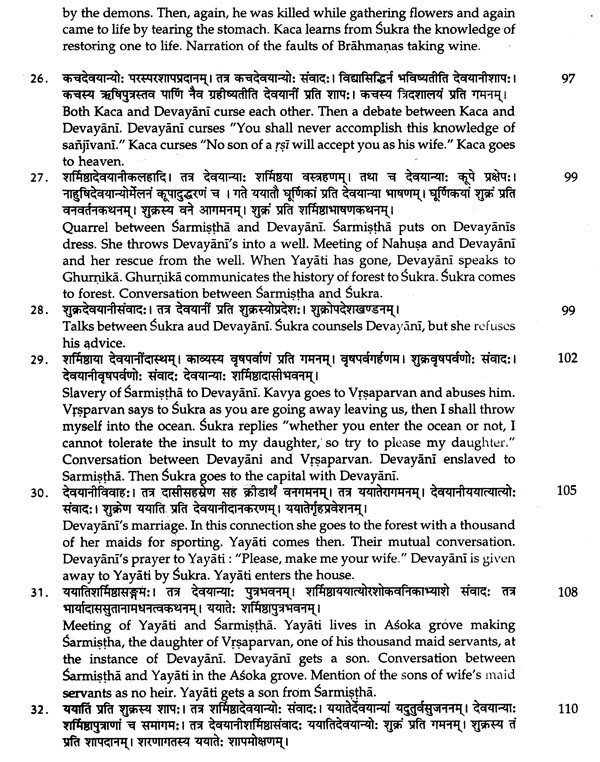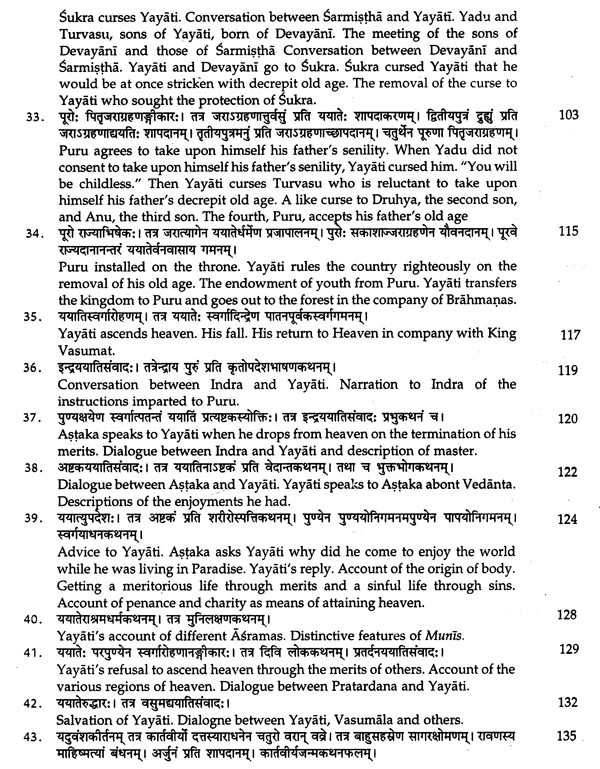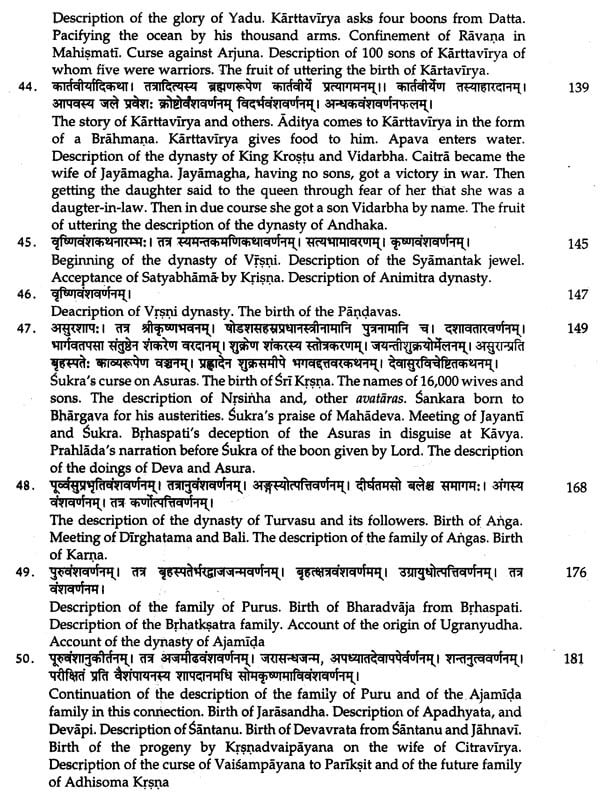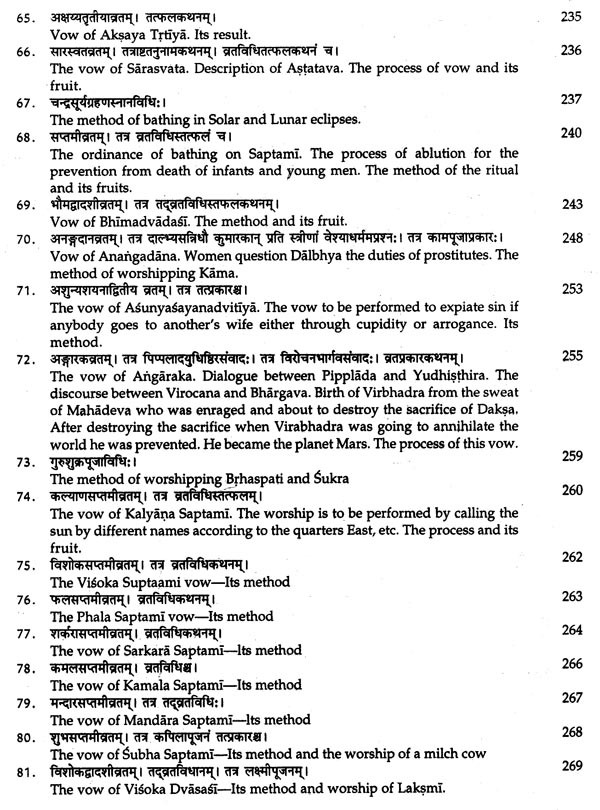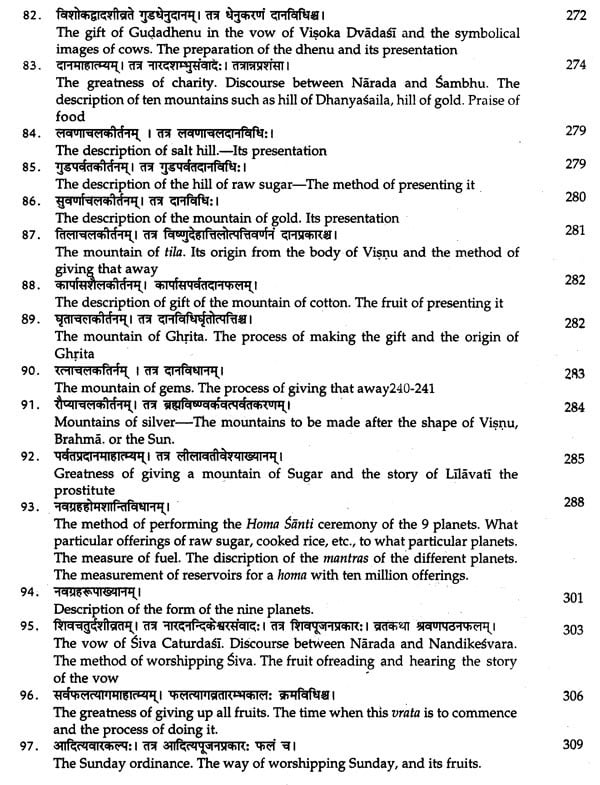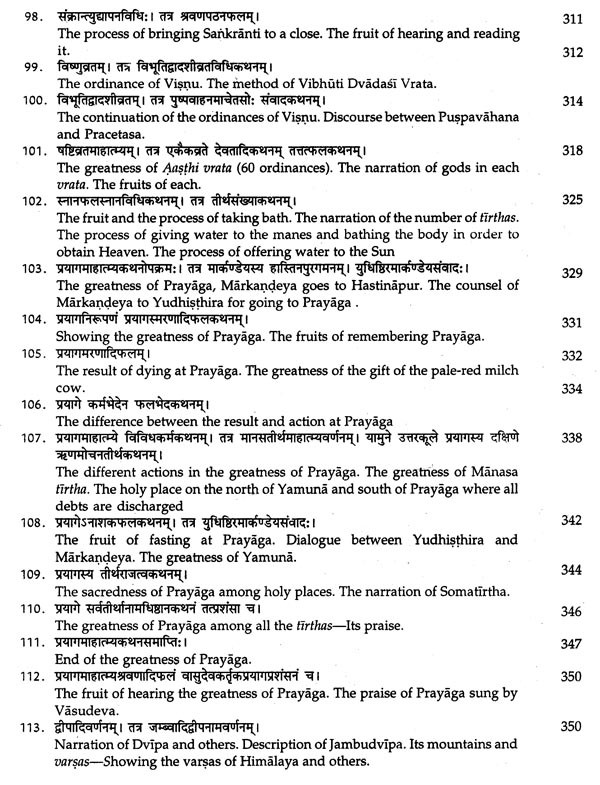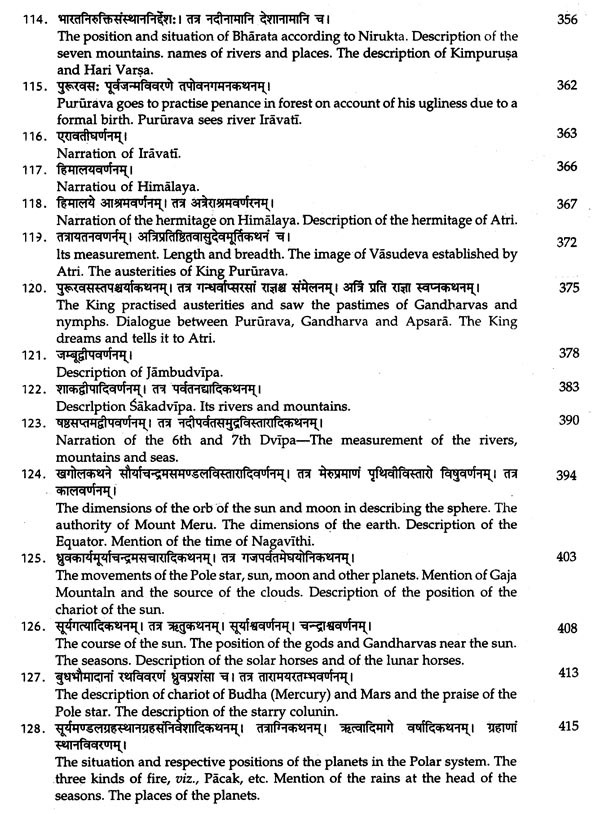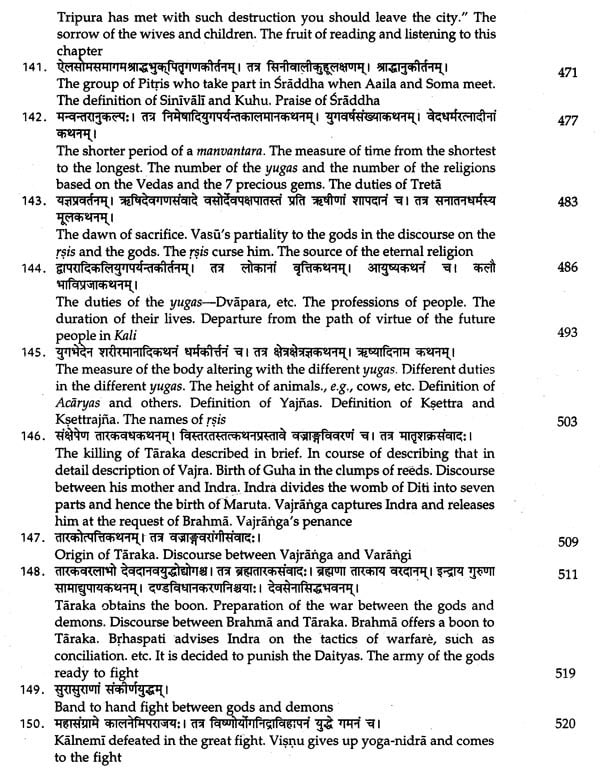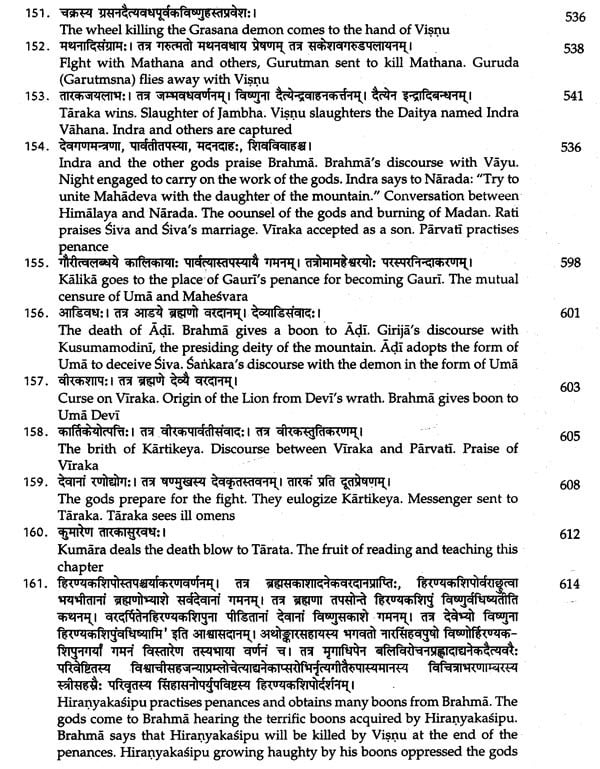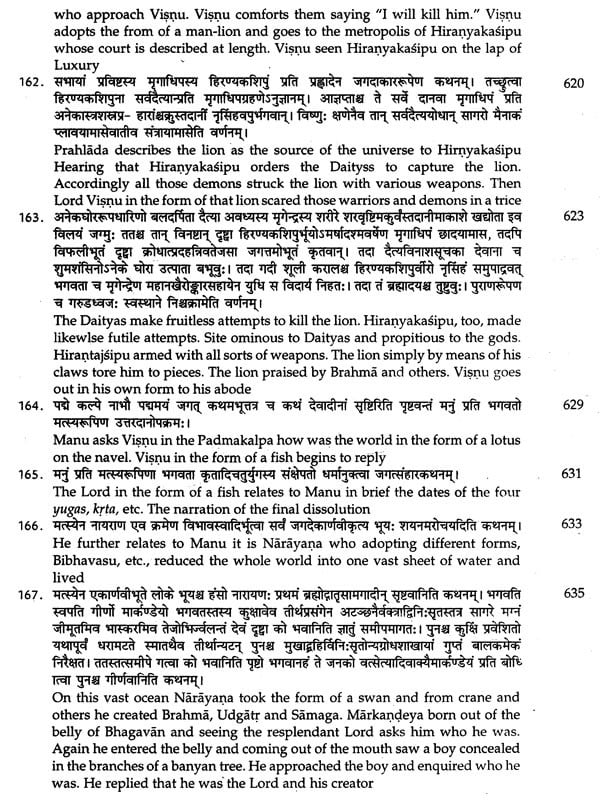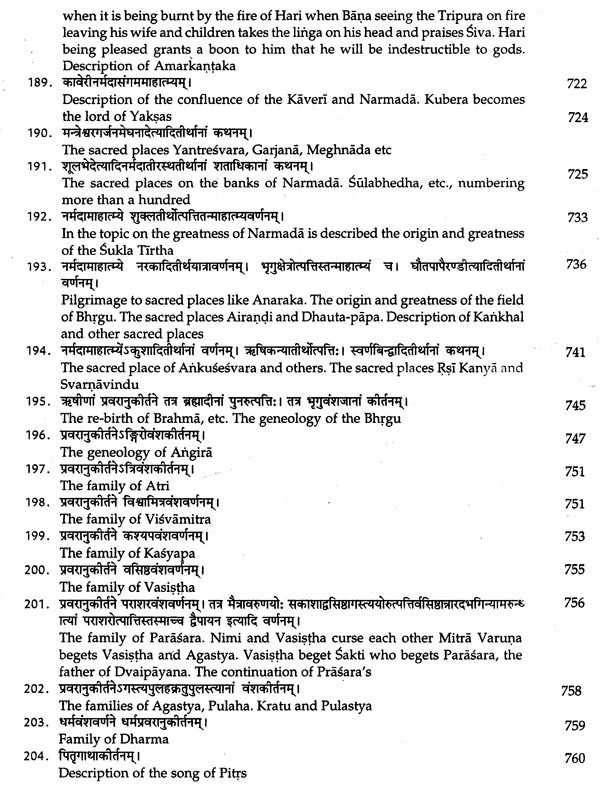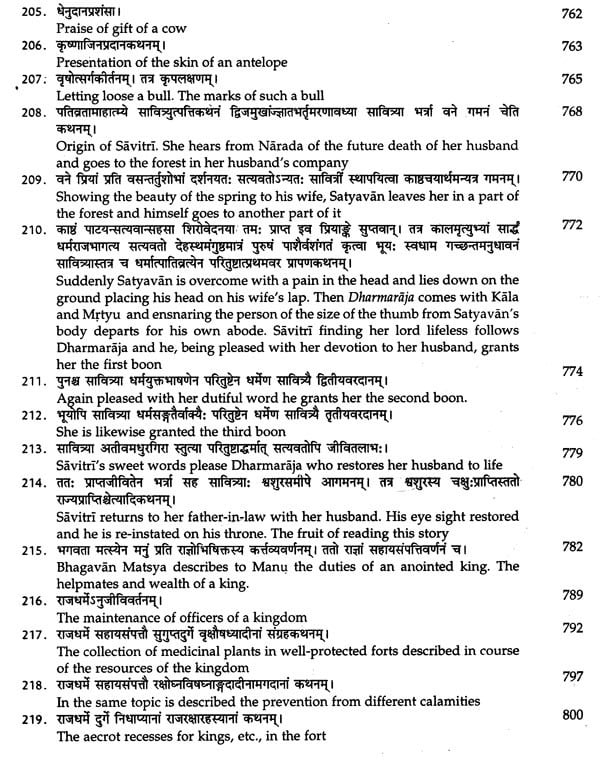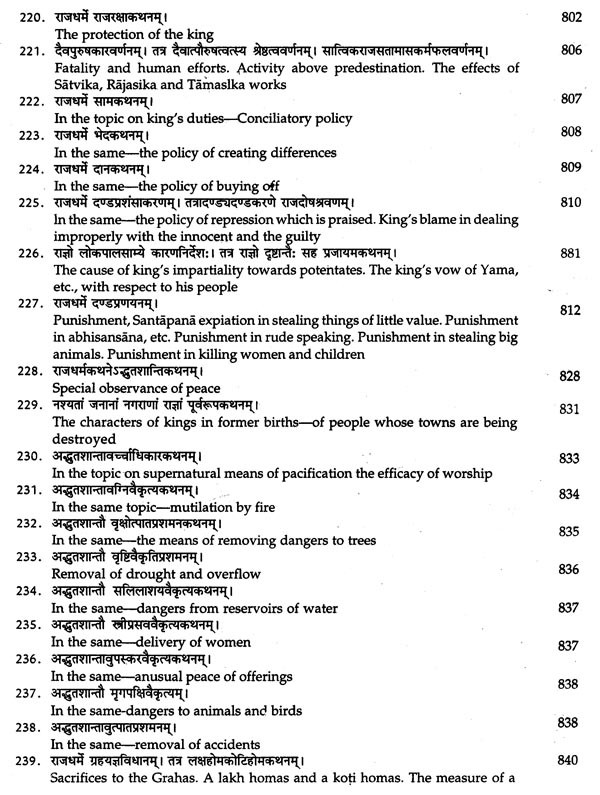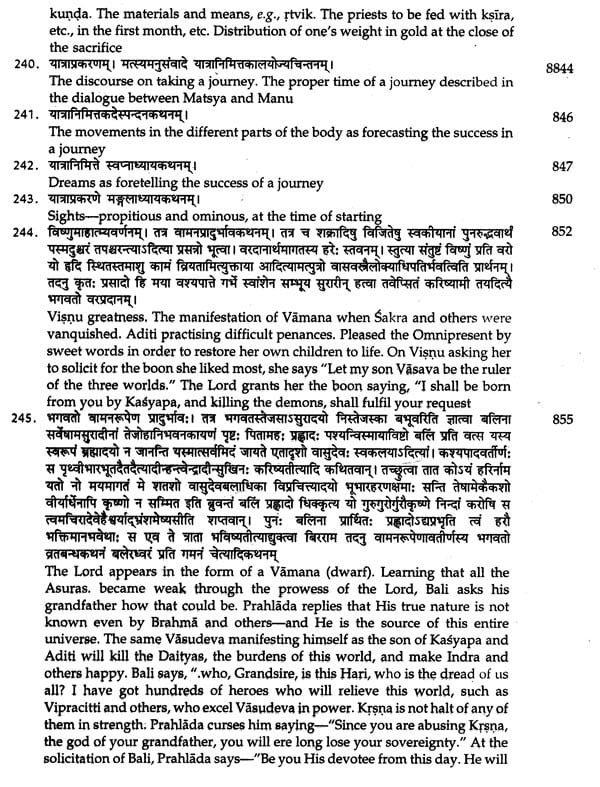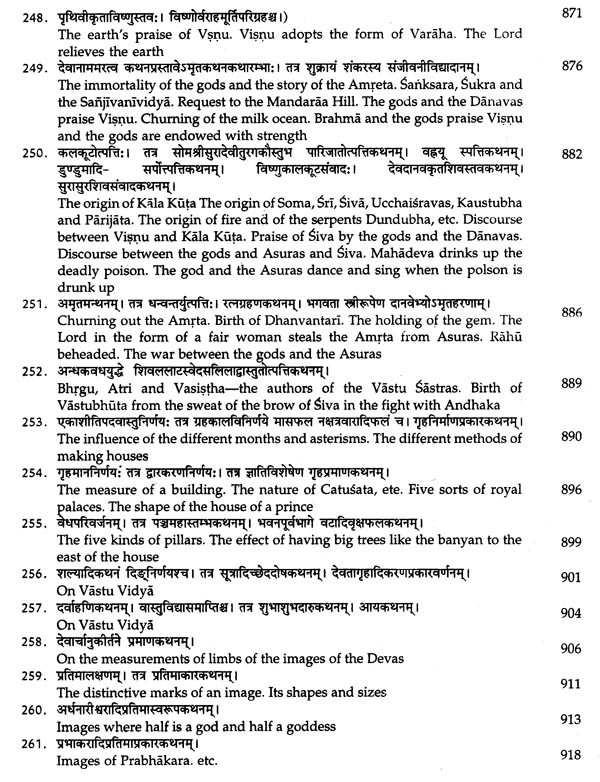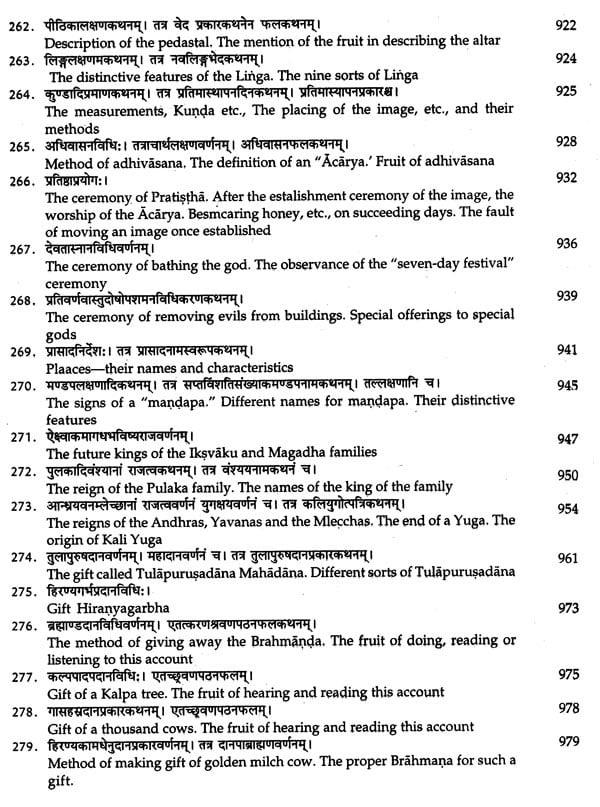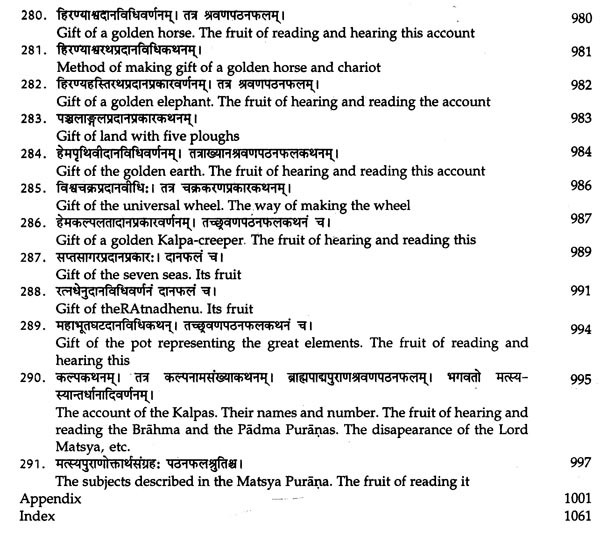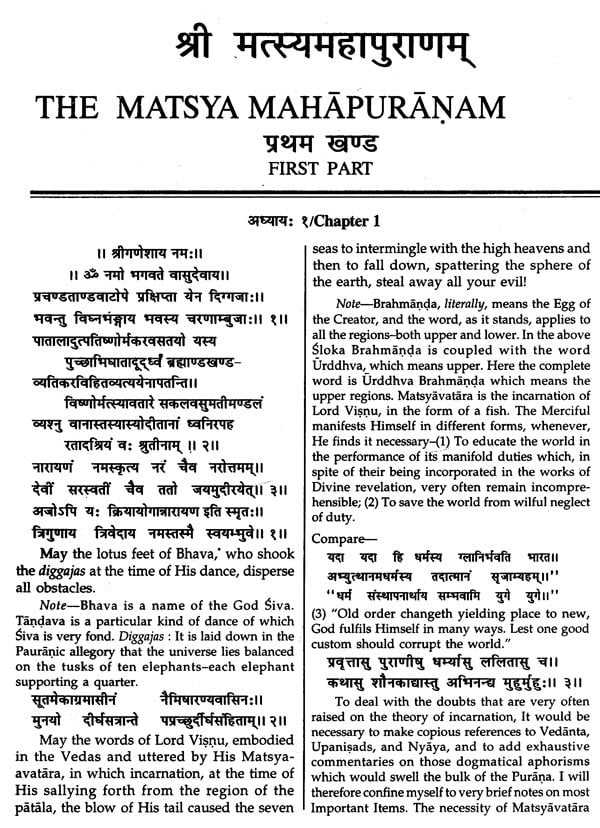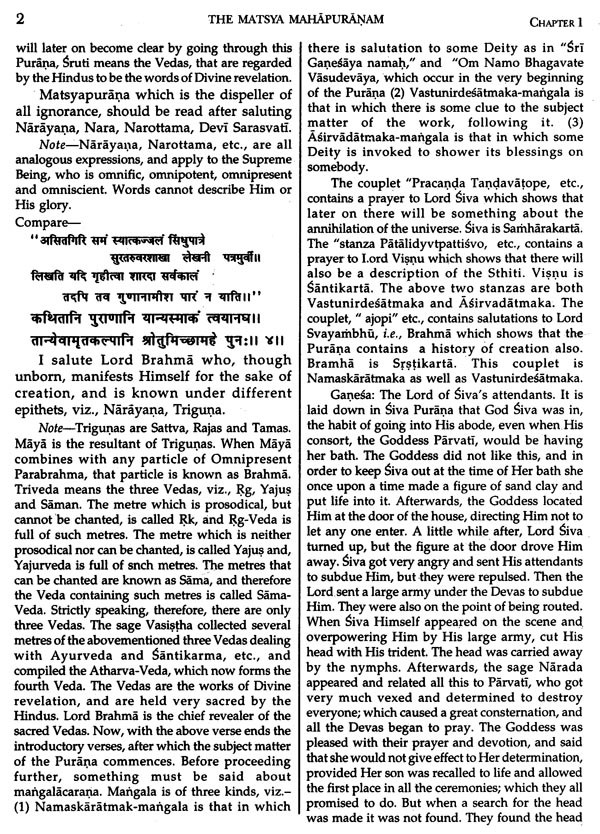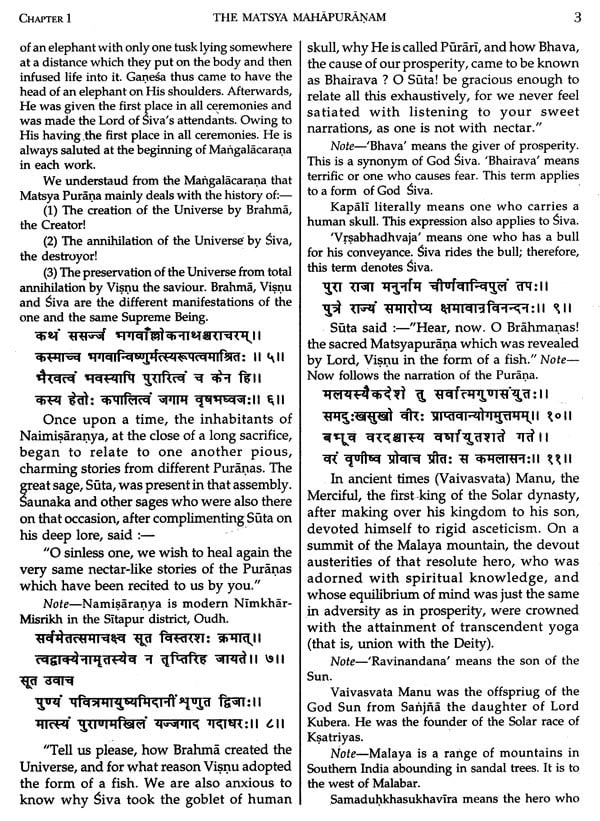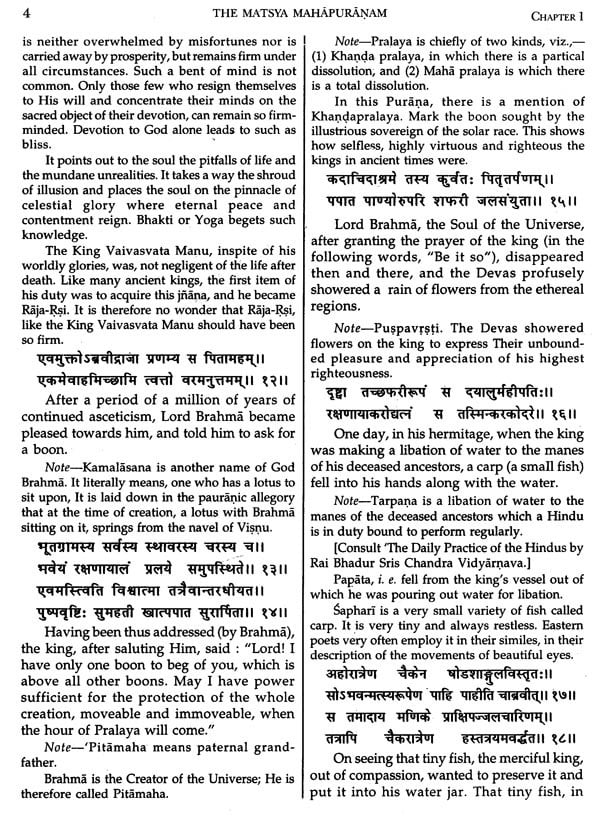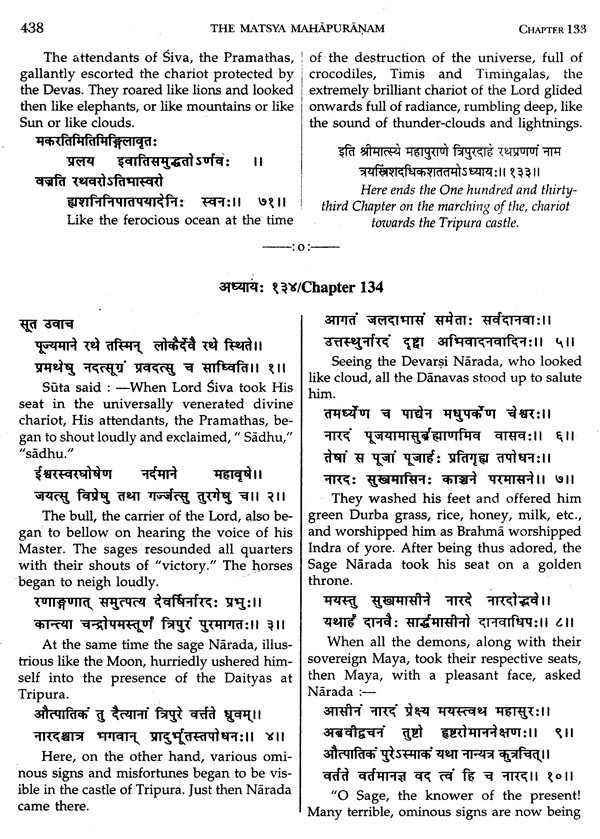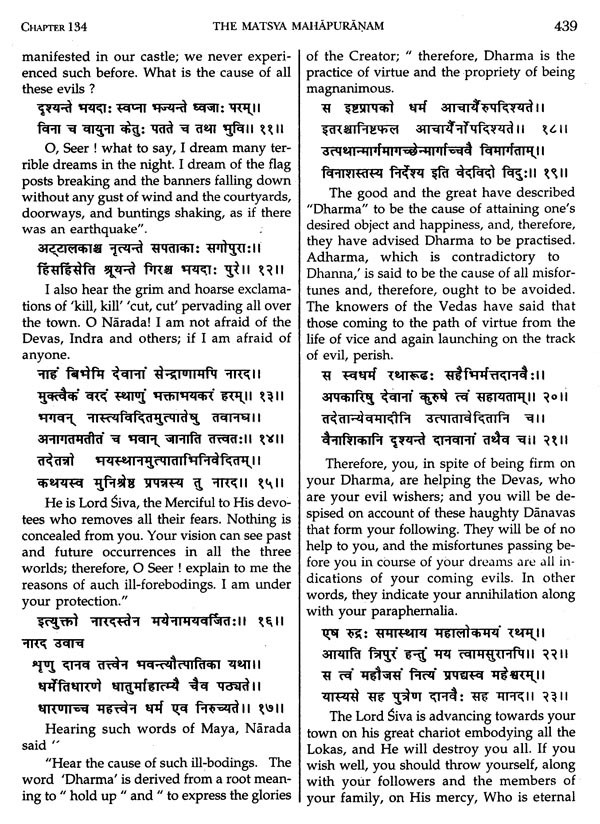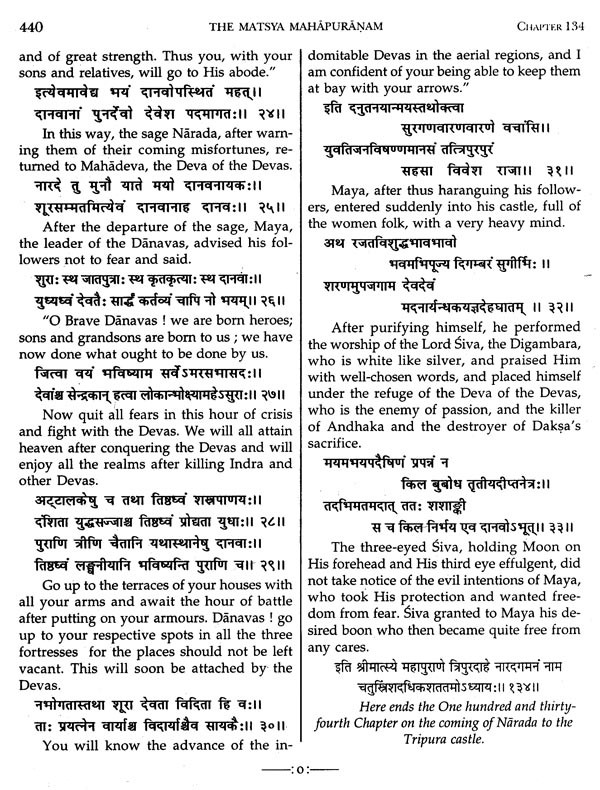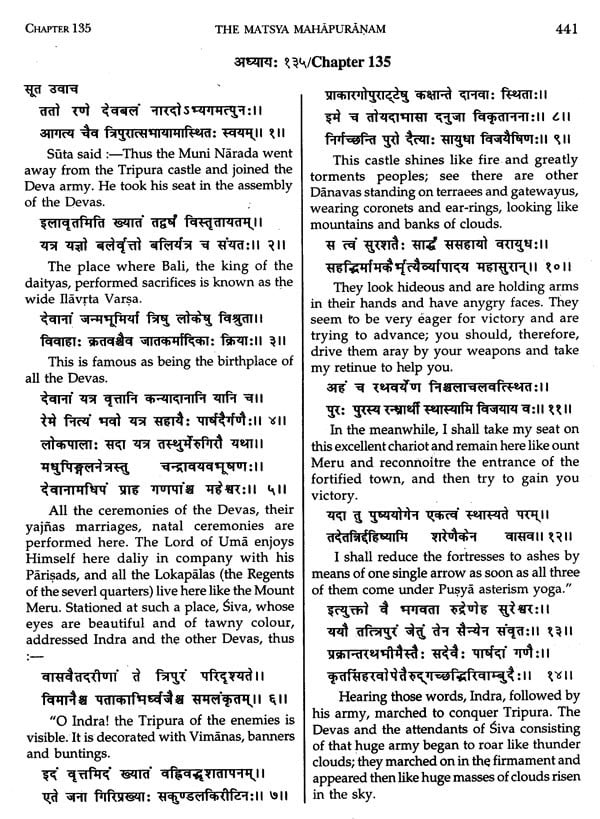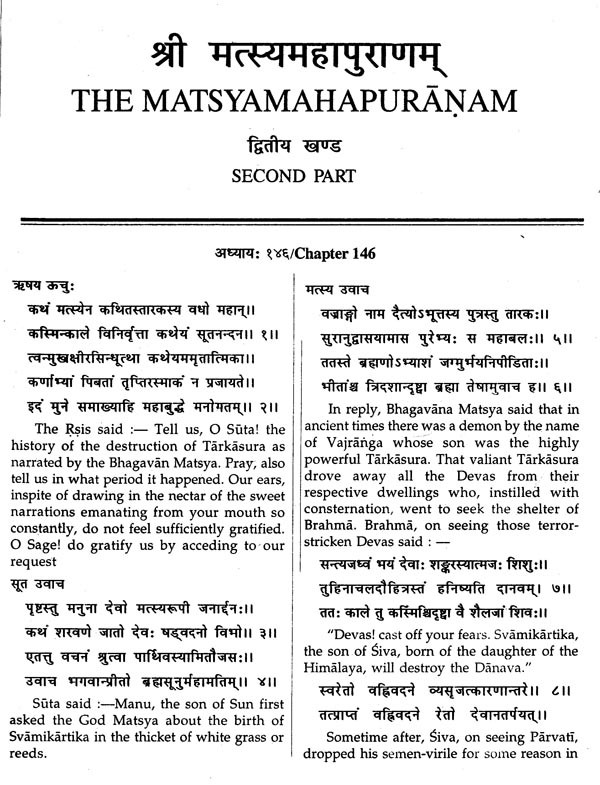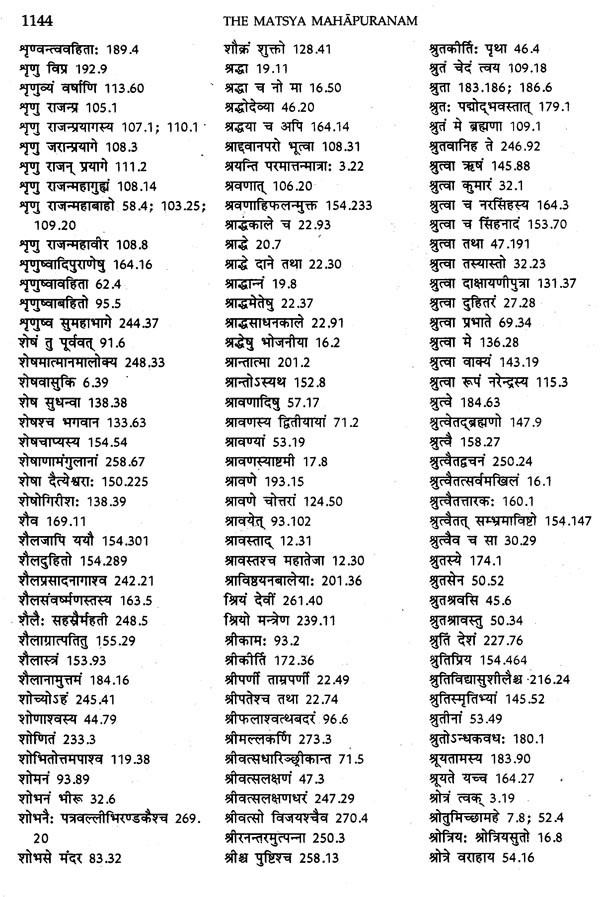
श्रीमत्स्यमहापुराणम्- The Matyamahapuranam (Text With English Translation, Notes and Index)
Book Specification
| Item Code: | AZF391 |
| Author: | Pushpendra Kumar |
| Publisher: | Eastern Book Linkers |
| Language: | SANSKRIT TEXT WITH ENGLISH TRANSLATION |
| Edition: | 2009 |
| ISBN: | 9788178541594 |
| Pages: | 1154 |
| Cover: | HARDCOVER |
| Other Details | 10.00x7.50 inches |
| Weight | 2.60 kg |
Book Description
The Purāņas are very beneficial for the Indian Society since their inception. These are like the ocean and comprise valuable gems. If you have a wider vision to see their importance and have research acumen) you will secret find valuable material such as historical, social, intellectual old episodes about India and its people.
The Puranas meaning 'ancient lore' describe what is ancient and are written in simple Sanskrit but in metrical from. All the Puranas are said to be the works of the same author who is the author of Mahabharata, viz., the great poet sage Veda Vyasa. All that it means is that the Puranas present the teachings of Vedas presented by Vyasa. While in the Mahabharata and the Ramayana, the tales of the great heroes form the main theme, in the Puranas the culture of the ancient times forms the main theme. By culture we mean the entire stock of intellectual and artistic achievements of the people. This also includes the civilization and practical attainments of the people. The purpose of the Puranic literature is to present the entire culture and civilisation of the ancient Indian people as a contrast to the new line of thought and life that was being introduced into the country and was getting stronger day by day. The Indian mind has ever been realistic and practical. There were changes in the society which could not be reverted back to the old mould. The new movement was one of adjustment, of assimilation and adoption. The new beliefs and codes of conduct were brought into old moulds and aroused a harmonious culture in which the new form and material and the old were amagamated. The works were called the Puranas.
**Contents and Sample Pages**


